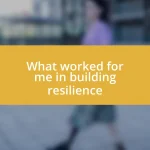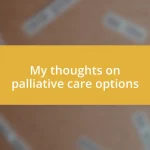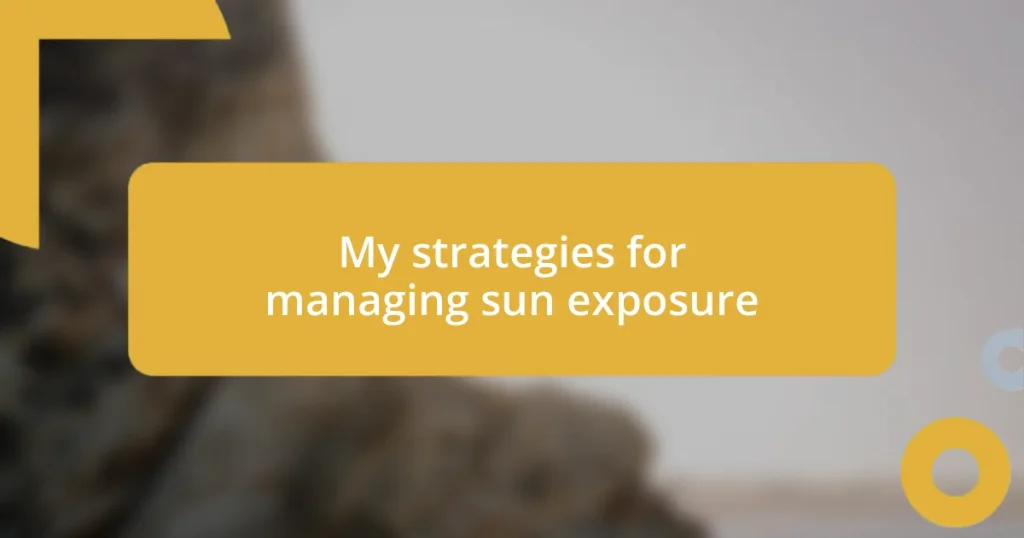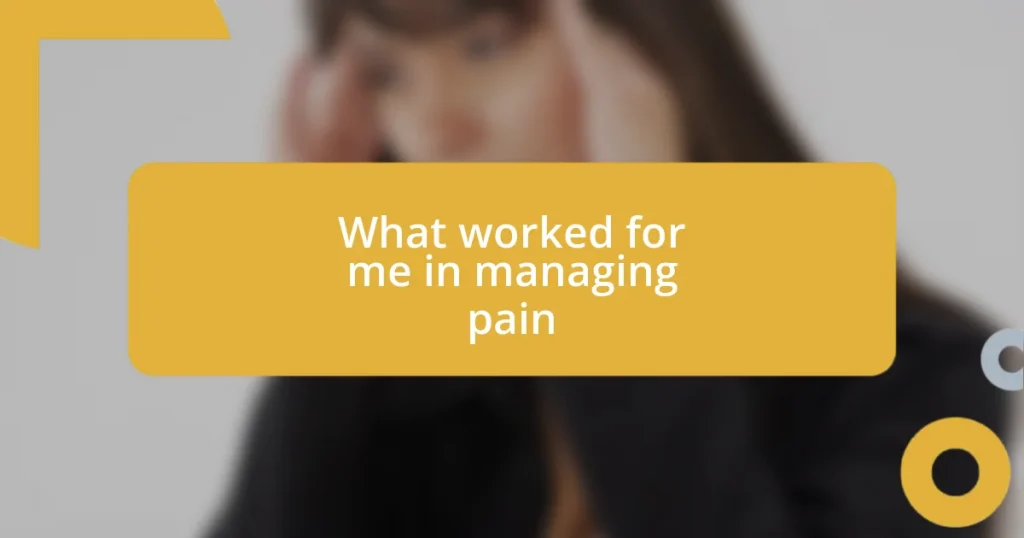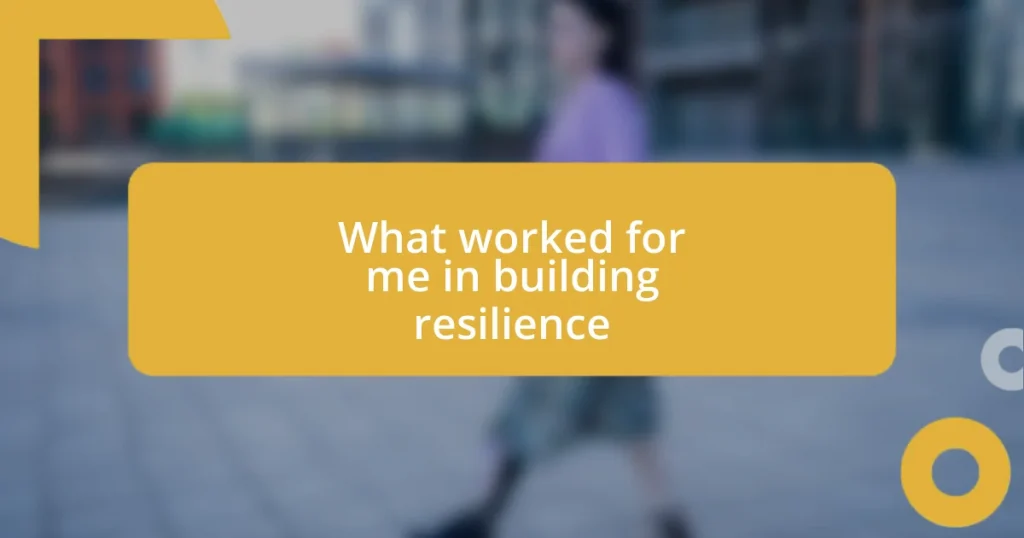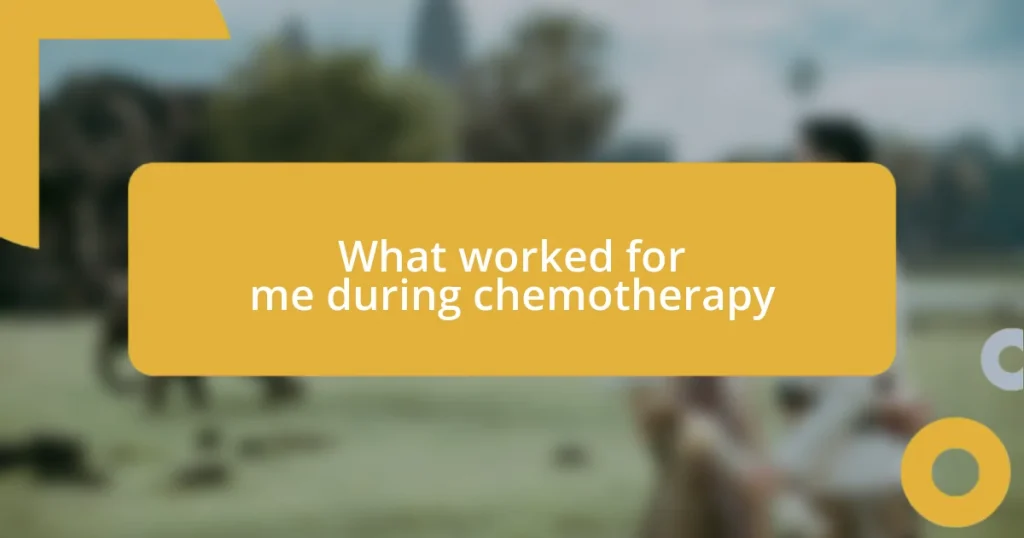Key takeaways:
- UV radiation from the sun can lead to skin damage, prolonged effects like premature aging, and increased skin cancer risk; protection is essential even on cloudy days.
- Understanding your skin type is crucial for selecting the appropriate sun protection measures, ensuring effective shielding against UV exposure.
- Utilizing shade, proper clothing, and technology like sun exposure tracking apps can significantly enhance sun safety and help manage skin protection effectively.

Understanding sun exposure risks
When I think about sun exposure risks, I can’t help but recall a summer vacation when I misjudged the intensity of the sun. I spent hours at the beach, soaking up the rays, only to end up with a painful sunburn. That experience taught me that while the sunshine feels good, it also comes with the risk of skin damage and long-term consequences, like increased chances of skin cancer.
You might wonder why this matters so much. Well, the UV radiation from the sun can lead to more than just a temporary burn. It can cause premature aging, resulting in wrinkles and sunspots that linger long after summer fades. What’s especially concerning is that these effects can accumulate over years, quietly changing our skin without us even realizing it until it’s too late.
Understanding the risks associated with sun exposure is key to protecting ourselves. I often remind my friends—especially those who love outdoor activities—that even on cloudy days, up to 80% of UV rays can reach our skin. So, next time you step outside, ask yourself: “Am I doing enough to protect my skin?” The answer might just motivate you to take that extra step, whether it’s applying sunscreen or seeking shade more often.

Identifying your skin type
Identifying your skin type is a crucial step in managing sun exposure effectively. I remember the first time I learned about the different skin types—I had always thought my skin was just “normal,” until a friend pointed out how much my complexion changed with sun exposure. Once I started paying attention, I realized my skin was actually more sensitive than I had assumed. Knowing your skin type helps tailor your sun protection strategy.
Here are some common skin types to consider:
- Normal: Balanced and not too oily or dry; can tolerate most products.
- Oily: Shiny with enlarged pores; prone to acne, but often better at fighting wrinkles.
- Dry: Flaky, rough, and may feel tight; needs extra hydration and gentle products.
- Combination: A mix of oily and dry areas, often oily in the T-zone (forehead, nose, chin) and dry on the cheeks.
- Sensitive: Easily irritated, reacts to various products or environmental factors; requires soothing and hypoallergenic options.
By understanding your skin type, you can choose the right sunscreen and protective measures, ensuring you protect your skin according to its specific needs. I’ll never forget the time I chose a sunscreen that was too heavy for my combination skin. It left me feeling greasy and led to an unfortunate breakout. That moment was a real eye-opener about the importance of selecting the right products!

Best times to avoid sunlight
When considering the best times to avoid sunlight, I always remember the golden hours of the sun’s intensity. After experimenting with my own sun exposure strategies, I’ve become keenly aware that the sun’s rays are strongest between 10 a.m. and 4 p.m. This period is when UV radiation peaks, making it wise to seek shade or limit outdoor activities. Picture a time when I went hiking during midday—while the views were stunning, the sun beat down mercilessly, leaving me fatigued and sunburned. That experience taught me to plan outdoor adventures in the early morning or late afternoon instead.
Another critical insight I’ve gained is that the angle of the sun can dramatically affect UV exposure. For instance, during the summer months, the sun sits higher in the sky, intensifying those rays. I recall a family picnic on a bright July day, when my friends and I miscalculated the time to apply sunscreen. The relentless sun left us peeling for weeks! By avoiding direct sun during those peak hours, we can dodge most of the harmful effects.
To provide a quick reference for planning your outdoor activities, here’s a simple comparison of UV exposure at different times:
| Time of Day | UV Radiation Level |
|---|---|
| Before 10 a.m. | Low |
| 10 a.m. – 4 p.m. | High |
| After 4 p.m. | Moderate |
I hope this information empowers you to make informed choices about your sun exposure!

Effective sunscreen application techniques
Effective sunscreen application is essential for maximizing your sun protection. I’ve found that many people underestimate the amount of sunscreen needed; the recommended amount is about one ounce—roughly the size of a shot glass—for full body coverage. I remember a day at the beach when I thought I could make do with half the amount, only to end up with a painful sunburn. It really hit home that when it comes to sunscreen, less is definitely not more!
Applying sunscreen correctly also involves timing. You should apply it at least 15 minutes before heading outside, allowing your skin some time to absorb it properly. I’ve made the mistake of slathering it on just before stepping into the sun, and trust me, that’s a recipe for disaster. One time, I was so excited for a morning jog that I rushed and applied my sunscreen only seconds before leaving, and by the end, I felt like I had a sun-drenched battle wound on my shoulders!
Don’t forget to reapply, too. I’ve learned the hard way that sweating, swimming, or just plain living can wash away your protection. If I’m out enjoying a summer day, I typically set a timer on my phone to remind me to reapply every two hours. Have you ever noticed how easy it can be to lose track of time when you’re having fun? The first time I found myself burnt after a lovely day at the pool, I was shocked—and a little embarrassed. Now, I treat sunscreen reapplication like a vital part of my day, ensuring my skin stays safe while I enjoy the sun responsibly.

Clothing choices for sun protection
When it comes to clothing choices, achieving sun protection can be as simple as selecting the right fabrics. I’ve discovered that lightweight, tightly woven materials can often block harmful UV rays effectively. I remember a beach trip when I opted for a loose, airy cotton shirt instead of my usual tank top. It turned out to be a game-changer; not only did my arms stay cool, but I also escaped the sunburn that often accompanies long days by the water. Who knew a simple clothing swap could feel so liberating and protective?
For those looking for extra reassurance, you might want to invest in clothing specifically designed for sun protection. These garments often come with an ultraviolet protection factor (UPF) rating, indicating how much UV radiation can penetrate the fabric. I bought a stylish wide-brimmed hat a few summers back, and let me tell you, it became my sunshield. Not only did it keep my face shaded, but it also added a flair to my beach outfit. Can you believe how a single accessory can elevate your style while defending your skin at the same time?
Layering is another tactic that has worked wonders for me. On a hiking trip last fall, I opted for a long-sleeved shirt under a lightweight jacket, and it provided an unexpected layer of protection. The moments when I felt the sun’s intensity were less frequent, allowing me to enjoy the scenery without constantly worrying about the sun’s reach. So, next time you’re getting dressed for outdoor fun, think about layering for comfort and coverage; it might just become your favorite method for minimizing sun exposure.

Utilizing shade and building cover
Finding shade is one of my favorite strategies for managing sun exposure. During my summer picnics, I’ve made it a point to sit under trees or canopies. Not only does it provide a much-needed break from the sun, but it also creates a cozy atmosphere for chatting and enjoying the company of friends. Have you ever noticed how a little shade can transform a hot day into an inviting retreat?
Building cover can also play a significant role in reducing sun exposure while enhancing outdoor spaces. When I designed my backyard, I incorporated a pergola with climbing vines. It’s incredible how the dappled sunlight filters through the leaves, creating a soothing effect while still keeping me protected. I can easily spend an entire afternoon reading in that spot without feeling the harmful effects of direct sunlight. Have you thought about how adding elements like this to your outdoor area could make it not just more beautiful, but also safer?
I’ve also learned that strategically using umbrellas can be a game-changer. At beach outings, I seldom forget to set up a large umbrella as my portable shade haven. It feels almost like having my own little sanctuary where I can escape the heat, sip on a cool drink, and still enjoy the beach vibes. It’s a practical solution that makes a world of difference. Are you making the most of the shade options available to you?

Strategies for tracking sun exposure
Tracking sun exposure can be quite insightful, especially with the right tools. I’ve started using a simple app that not only calculates UV index levels based on my location but also sends me reminders to reapply sunscreen. It’s like having a personal sun coach in my pocket! Have you ever considered how technology can make managing sun exposure more manageable?
Another strategy I’ve found effective is keeping a sun diary. After each sun-filled outing, I jot down details like the time spent outside, weather conditions, and any sunscreen applied. Reflecting on these notes helps me understand my patterns and adjust my sun protection strategy accordingly. It’s fascinating how a few minutes of recording my sun exposure can empower me to make smarter choices for my skin.
Lastly, I’ve embraced the habit of assessing my surroundings to gauge sun exposure. During a recent walk in the park, I noticed the areas with more trees providing a natural barrier against the sun’s rays. Now, I actively seek out these sun-safe spots. Have you thought about how being mindful of your environment could transform your outdoor experience? It’s amazing how simple awareness can lead to better protection!

